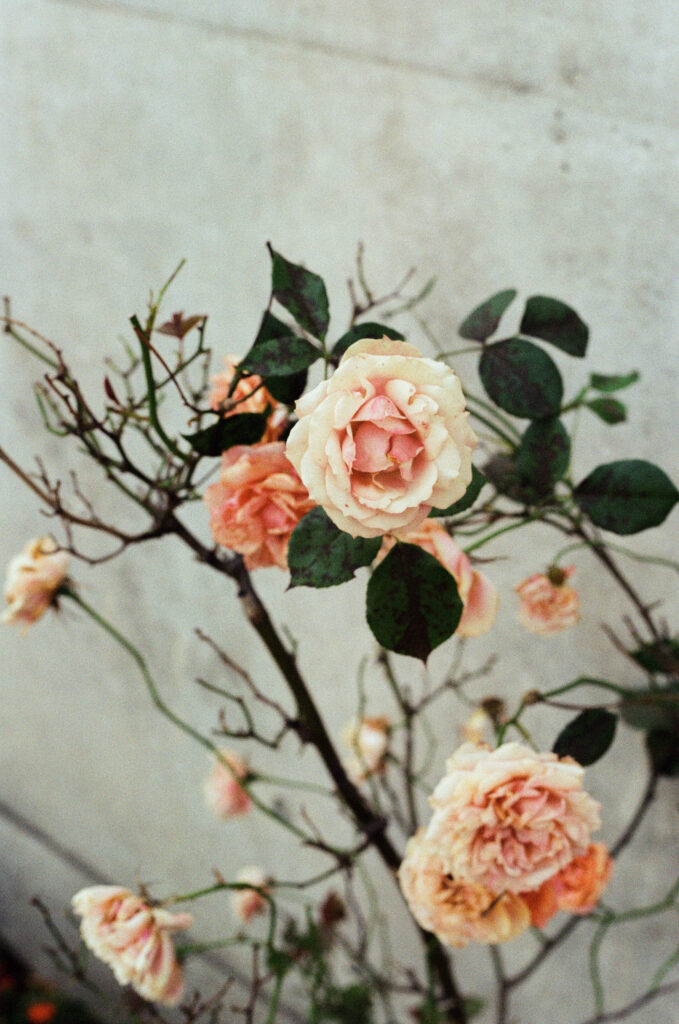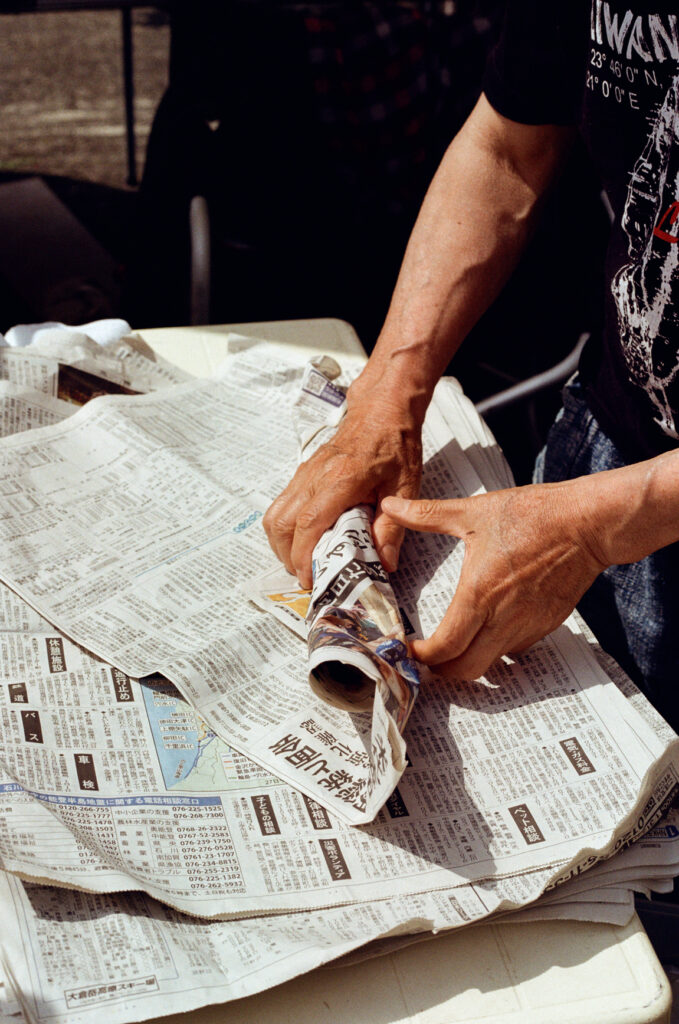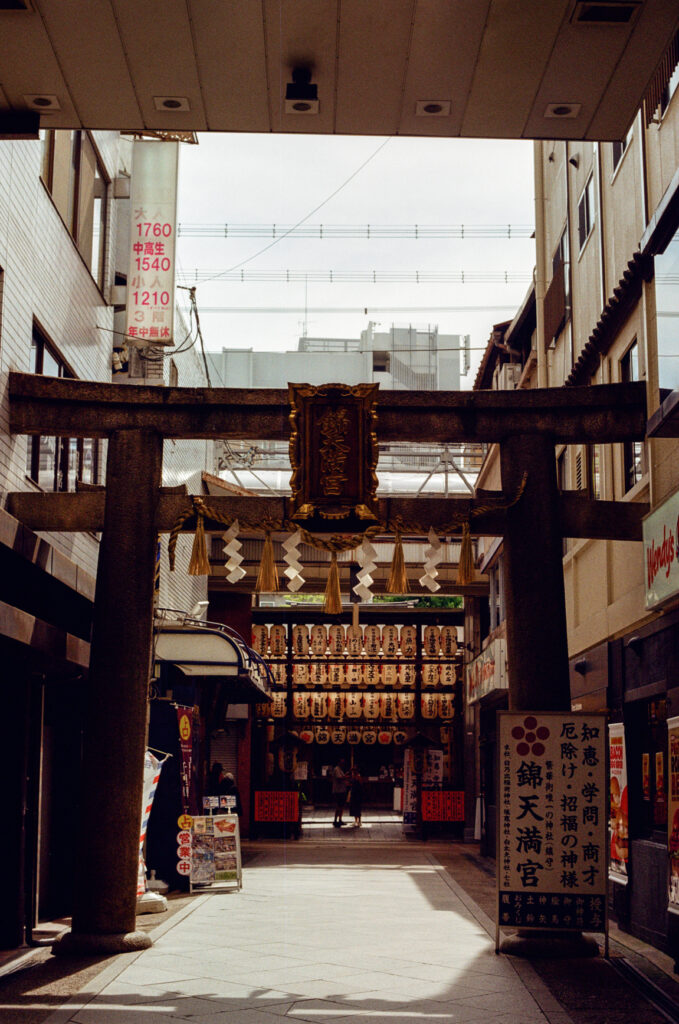Kyoto, Japan
December 5, 2024

There are some places that just have a good vibe. Kyoto is one of those. Its charm lies in its quiet streets, steeped in history. It’s hard to quantify when you’re describing it to others, but upon arrival into Kyoto I was immediately stuck by its beauty: wooden Machiya, Japanese-style shingle houses, sit next to more modern builds, and bicycles whizz past while locals chat on the street.





The rain we had experienced for the last few days in Osaka had cleared when we arrived, and even the walk from the train station to our hotel had me excited to wander the surrounding streets and take it all in. Our first port of call was venturing down to the river as the sun set. A great array of wooden restaurants on stilts flank one side of the river, with people lazing on the grass on the other. We eventually headed back to the Ace and stopped for a last-light drink on the terrace, which was busy with others also making the most of the balmy weather.






While due to Kyoto’s rich history there are many traditional stays on offer, I had been recommended the Ace Hotel Kyoto by a friend and we decided to give it a go. What it may have lacked in history it made up for in spades – vibes-wise – and I would absolutely stay again. Aside from features like the in-room record player and cute shops below, the quiet streets surrounding the property, primed for wandering in the fading afternoon light, and the top-notch Stumptown Coffee downstairs were definitely appreciated. While an Ace Hotel in Kyoto is geographically isolated from their other properties, the thriving creative community in Kyoto fits with the quirky brand. There is also a very funny, very cringe photo booth next to Stumptown if you do pop in to get caffeinated (Brandon did not love the photo booth experience, which was replete with hilarious pose directions).

The ‘must visit’ sites of Kyoto are plentiful, and you’ll find them with a quick Google: Nijō Castle, Kinkaku-Ji Temple and Kiyomizu-dera, to name a few. While they are definitely worth a look, Kyoto’s current state of over-tourism was undeniable during our visit. If you do choose to add these tourist hotspots to your list, I would absolutely recommend taking the time to either go early or late, and instead spend your days on less popular sights.








By a complete stroke of luck, the Toji Temple market, which falls on the 21st of each month, was on during our stay. Arriving to the temple and seeing the set up was incredible – again, early wake-up recommended. After catching the bus to the temple, stalls sprawled far as the eye could see, from one side of the temple grounds to the other. From vintage kimonos to yakisoba, old matchboxes to second hand knick knacks, I was in heaven. I also found an overwhelming array of unique and beautiful pottery, and had the chance to chat with many of the potters about their work.
The diverse collection of goods on offer meant that both locals and tourists were wandering the stalls. As the day got warmer, the crowds increased, and we stopped to eat a freshly cooked plate of yakisoba – so delicious and the ultimate refuelling opportunity after a solid few hours of treasure hunting.




After one particular morning exploring, I had passed the stage from hungry to hangry (a dangerously thin line, easily crossed after a day of high step counts and sights to see). Just around the corner from our hotel we stopped for lunch here, which was a hidden delight. It was a typical scene from our trip: a lineup of ten people, waiting outside a restaurant smaller than my inner-city lounge room, a bench lining the open kitchen with space for 4 or so people and a steep spiral staircase winding up to a second floor, where a few more tables could be perched to enjoy their meal. A delicious bowl of ramen, featuring melt-in-your-mouth pork, light but perfectly complimentary shoyu broth and finished with shaved spring onion and the perfect egg. Only in Japan.

An off-the-beaten track visit – that was still smack bang in the centre of town – was Naito Shoten, a brush shop that’s been around since 1818. With no sign and only a few back-and-forth saunters down the footpath to find it, it was one of the ‘to visit’ stops on my list that had Brandon puzzled and myself delighted. Naito Shoten stocks a wide range of artisan-made brushes, and is a delightful illustration of the Japanese reverence for tradition and craftsmanship. Of course, I picked up a little brush that now sits in pride of place amongst my other random assortment of knick knacks collected from near and far (for example: shisa ornaments from Okinawa).

I don’t actually know if locals go to Kura Sushi, and I am guessing probably not, but it was a unique experience – and a complete contrast to the one described above. For the uninitiated (me before I went), it’s likely the cheapest sushi with the least human interaction you will ever experience during dining out (joke’s on me if I read this 50 years from now while we are controlled by our robot overlords). You walk in, hit some buttons, get a table number and wait for your table to be allocated on a screen. Take a seat, and either wait for your chosen delight to trundle its way around the sushi train, or instead order on an iPad. Within minutes, a plate of sushi – or a dangerously full beer – is flung at breakneck speed along the track and screeches to a halt before you. At about $1.50 a plate, you can’t really go wrong.





One thing about Japan – that the overeager morning person in me constantly forgot about – is that most shops don’t open until 10:00am. I (again) fell into the early-rising trap on our last morning in Kyoto, hoping to visit Nishiki Market prior to catching the Shinkansen south. Only a few shopfronts were opening when we arrived, which was on one hand nice as we had the chance to wander the market prior to the crowds, but on the other meant that could only look at the shops either from the outside, or later on as they were opened. In terms of traditional ‘breakfast’ options, there was a stall selling tamagoyaki (Japanese omelette), but aside from this there was an abundance of fresh seafood. I try my best to be adventurous but sashimi or uni (sea urchin) on an empty stomach is unfortunately where I draw the line. While I can’t comment on the full Nishiki Market experience after only visiting it upon opening, the swift influx of tourists had me suspecting that during busy periods, the market would reach similar suffocating levels of business that we had experienced at Kyoto’s other popular sights.
Our visit to Kyoto was in May, and the daily temperatures were perfect: balmy and ideal for walking around the city’s many sights. I would absolutely return, and spend some more time exploring the lesser-known historical buildings.
My main piece of advice to those visiting Kyoto would be this: go early or late to busier spots, and otherwise spend your time exploring the city on foot or bicycle and forgetting the ‘must visit’ lists. Kyoto is a place that unfolds before you, and I found it much more enjoyable discovering tiny shops and quirky streets than feeling suffocated by crowds at the tourist sites.





Yahooo!! We are heading to Kyoto in a couple of days and this is perfect for an unprepared girly like me!!! All your photos are absolutely stunning!!